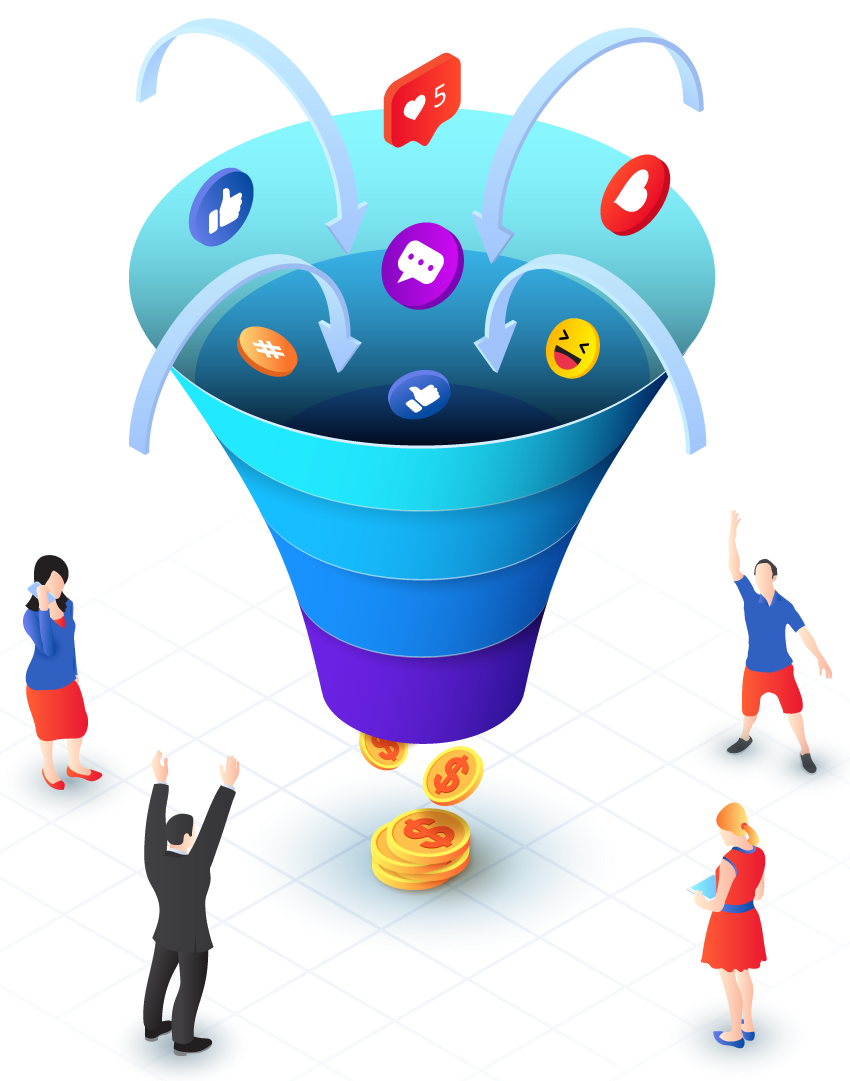Sales Funnels 101 - What They Are and Why They Matter
Sales funnels give businesses a defined strategy they can use to generate sales. They help marketers and sales teams understand the process their customers go through to make a purchase, which makes it easier to optimize each step of that journey for conversions.
The most basic sales funnel is a series of steps that a prospective customer takes to go from awareness/attraction to becoming a qualified lead, to ultimately making a purchase. This process, sometimes referred to as the AIDA model, has four stages: awareness/attraction, interest, desire and action.
To capture the attention of potential customers, businesses can create content that speaks to their needs at each stage in your funnel. This may include a downloadable resource, a webinar, an email newsletter or social media campaigns. The key is to align these strategies with your target audience’s motivations and pain points.
For example, if you are targeting executives at large companies, Instagram ads may not be your best bet. Instead, you might want to invest more resources into LinkedIn networking.
As prospects move through the interest stage, they may visit your website for more in-depth information about how your product or service can meet their needs. This could include testimonials, pricing pages, comparisons with competitors or FAQ pages. It is also important to answer any questions that they have to eliminate any barriers to purchase.
Once a prospect moves into the decision stage, they are ready to select a product and begin their purchase. They may choose to contact a sales rep or visit your physical store to finalize their decision. Sales reps can help them overcome any barriers to purchase by answering any remaining questions, creating proposals and negotiating terms.
After a sale, you can keep your customers engaged by encouraging them to return and providing incentives like coupons, free gifts or other discounts. In addition, you can create a loyalty program that rewards repeat purchases. This helps to build brand loyalty and encourages new customers to try your product or service.
Sales funnels also allow marketers to analyze the performance of different marketing channels and tactics to identify what is working and where you need to improve.
This can help you allocate more resources to effective strategies and minimize costs in less-effective ones. For example, if you find that it is costing $10 to acquire a customer through Google advertising but only $9 through Instagram, it would be wise to focus more of your resources on the latter.
Sales funnels can help businesses to make sales consistently, which is the only way to generate regular income to cover operating expenses. With the right tools, anyone can create a sales pipeline that helps them to reach their goals and achieve success as a business.

Free Training video
How To Transform Your Online Business with Our Universal Sales Funnel Template
My Recent Posts
All-in-One Sales Automation Platform
Check out my recent post on all-in-one sales and marketing tools and what I think of it.
Sales Funnels
Check out my recent post on sales funnels and what I think about them. Are they still worth it?

The Same "about me" text you wrote on your about me page; you want to write it here or write an excerpt of it here. Just make sure it makes sense, and looks complete if you're going to write an excerpt. So delete this text and add yours on every article page.
[ENTER YOUR NAME HERE]
©Copyright [ENTER CURRENT YEAR] [ENTER COMPANY NAME OR DOMAIN NAME]
[ENTER COMPANY ADDRESS]
[ENTER COMPANY CITY/STATE/PROVINCE & Zip Code/Postal Code]
